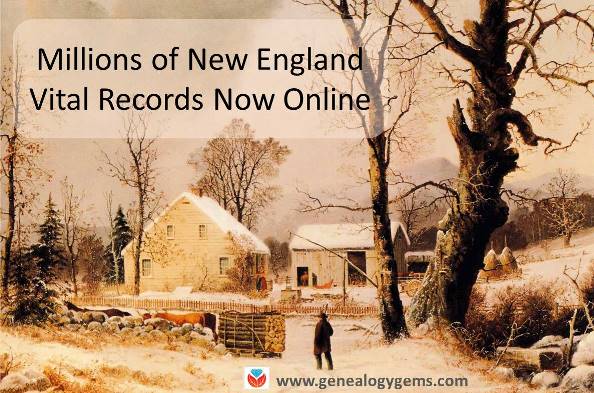Beginning Swedish Genealogy: Tips from Legacy Tree Genealogists
Beginning Swedish genealogy can be daunting. But don’t let language barriers or unfamiliar naming traditions deter you! Check out these getting-started tips from an expert at Legacy Tree Genealogists.
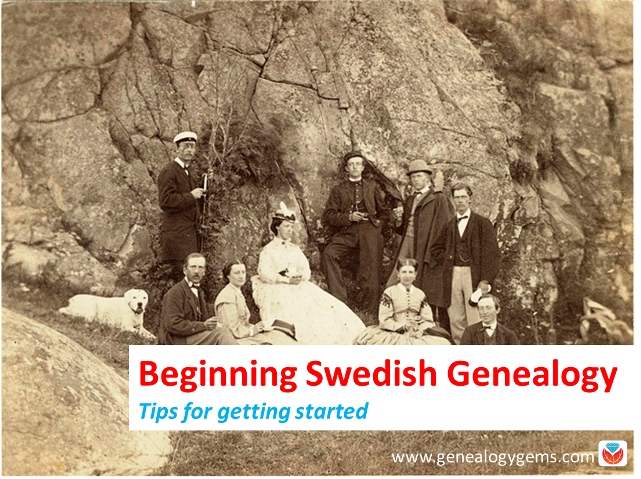
 This guest post comes from Paul Woodbury, a Senior Genealogist with Legacy Tree Genealogists. He’s an internationally recognized genetic genealogy expert and his varied geographical interests include Scandinavia. Thanks, Paul!
This guest post comes from Paul Woodbury, a Senior Genealogist with Legacy Tree Genealogists. He’s an internationally recognized genetic genealogy expert and his varied geographical interests include Scandinavia. Thanks, Paul!
Many people avoid Swedish research because they don’t speak the language and because the names change every generation–like from Ole Olsson to Ole Nilsson to Nils Pehrrson. Despite these barriers, Swedish research can be relatively simple, fun, and successful for several reasons.
1. You can “read” many records without reading Swedish.
Particularly in late 18th and 19th century records, you don’t need in-depth Swedish language skills to make exciting discoveries. Swedish church records of the time were kept in tables and were largely composed of names, dates, and residences. Records include those of:
- Birth and christening (födelse och döpte)
- Marriage and engagement (lysning och vigsel)
- Death and burial (död och begravning)
- Moving-in lists (inflyttade) and moving-out lists (utflyttade)
- Clerical examination (“husförhörslängd”)–more on these below.
Dates were frequently recorded in number formats according to the European system (dd-mm-yyyy). As a result, researchers can learn a great deal from Swedish documents with little knowledge of the Swedish language. For the few additional words you may need to learn, consider reviewing this list of words commonly found in Swedish documents available through FamilySearch.org.
2. Family events are summarized in Swedish clerical examinations.
The clerical examination or “husförhörslängd” can act as an index to important family events. Beginning in 1686, each parish was required to keep a household examination for each household. Many early records don’t survive, but copies of these records exist for many parishes in Sweden after about 1780. As part of the household examination, parish priests of the Swedish Lutheran church were required to visit with the members of their parish at least once yearly and test them on their knowledge of the catechism.
Typically, these registers document a family over the course of 5-10 years. They not only include information about the family’s religious duties, but additional information regarding migration, family structure, residence and important family events. If a child was born, he or she was added to the clerical examination, and the birth date and christening date were noted. If an individual or a family moved within the parish, a note was made in the clerical examination with a reference to the page number of the family’s new residence. If they moved out of the parish, the date they left was often recorded along with the number of their entry in the moving-out books. The dates of deaths, confirmations, marriages, vaccinations and communions were also recorded. If you are lucky, additional notes might comment on crimes, physical characteristics, occupations, punishments, social standing, economic status, or other life events with references to pertinent records.
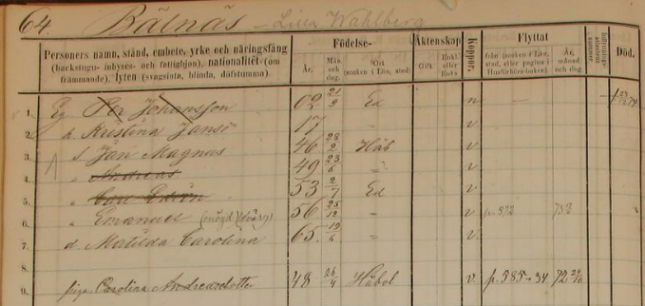
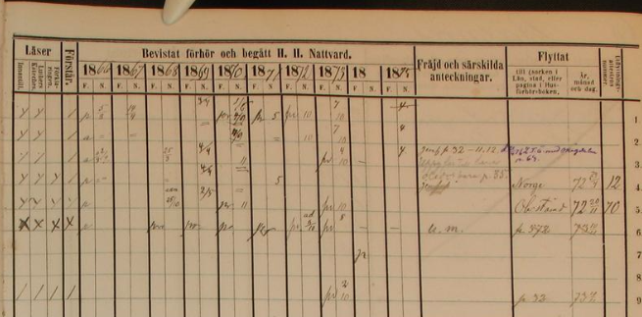
ArkivDigital, Dals-Ed (P) AI:15 (1866-1875), clerical examination, household of Per Johansson, Image 74 / page 64, https://app.arkivdigital.se, subscription database, accessed July 2017.
The above Household Clerical Examination in Dals-Ed Parish in Älvsborg covers 1866-1875 and shows the household of Per Johansson on the farm of Lilla Wahlberg in Bälnäs. The document provides birth dates and places for each household member. It shows that Per’s son, Andreas, moved to Norway in 1872. Another son, Emanuel, moved within the parish but returned after just a month. Among other notes on the document, we learn that Emanuel only had one eye and that he was a dwarf.
3. Many Swedish records cross-reference each other.
Clerical examinations reference other church records, such as those of a child’s birth or a couple’s marriage. But the reverse is also true: birth, marriage, death and migration records frequently reference household examinations. Birth records might list the page number of the child’s family in the household examination. Marriage records indicate the corresponding pages of the residences of the bride and the groom. Death records identify the residence of the deceased. Moving-in and moving-out records frequently report the corresponding page numbers of the farm where a migrant eventually settled or the parish from whence he came.
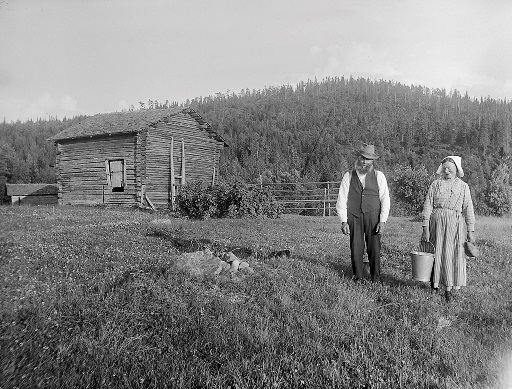
The yeoman farmer Ollas Per Persson and his wife Greta at a hut in Dalecarlia. Photograph by: Einar Erici, c1930. Wikimedia Commons image, Permission granted Swedish National Heritage Board @ Flickr Commons.
Most clerical examination buy medication for anxiety volumes include an index of farms and residences within the parish. In the case of some larger parishes and cities, local genealogical societies have sometimes indexed all individuals in the volume by name. When researching in multiple volumes, note the farm or residence of your ancestor in the previous record and then search the index of residences near the front or end of the next clerical examination volume. Usually, this will narrow your search to just a few pages out of the book rather than the entire volume.
4. You can trouble-shoot record gaps.
Even when an ancestor’s record trail turns cold, recent publications and indexes created by active Swedish genealogical societies make it possible to pick up the trails of elusive ancestors in earlier and later records. Even if these records do not list the specific pages of interest, they may still provide the reported residences, which can then be located in the clerical examination records.
Occasionally, an ancestor might have moved in a year for which migration records are not currently available, or they might have moved to a larger city with many parishes. Other times, their migration may not have been noted, or jurisdiction lines may have been redrawn resulting in the formation of a new farm and residence. In these cases it may be difficult to continue tracing an ancestor’s record trail. One strategy to overcome these situations is to search the clerical examinations by reported birth date. The birth dates or ages of Swedish ancestors are recorded in many of their records. If you are browsing through large collections, consider searching by birth date rather than by name. Since birth dates were often recorded in their own unique column and are more immediately recognizable than names, this may expedite your search. Even if these strategies still yield no results, searches in indexes may help to uncover an elusive ancestor’s record trail.
5. There are some excellent Swedish indexes and databases online.
In recent years, online indexes and databases have made Swedish genealogical research simpler than ever:
- FamilySearch.org, MyHeritage.com and Ancestry.com all have large collections of indexed birth, marriage and death records from Sweden.
- Sveriges Släktforskarföbund has compiled an index of Swedish death records from 1900 to 2013. It includes the birth dates, birth places, names, maiden names, death dates, residences at time of death, age at time of death, and if the individual was married or widowed, the index will also include the date of marriage or the date of death of their spouse. If they were not married, it will indicate their civil status. Click here to purchase the database (the price is in Swedish krona; do a Google search such as currency converter sek to usd to see the price in your country’s currency). (A related Ancestry.com database is entitled “Births from the Swedish Death Index” and only includes names, maiden name, birth dates and birth places of the individuals in the index.)
- MyHeritage has partnered with ArkivDigital to provide an index to Swedish clerical examinations between 1880 and 1920. (Indexing is underway for household examinations from 1850 to 1880.)
- Other indexed collections at ArkivDigital include the 1950 and 1960 Swedish censuses.
- Ancestry.com has indexes of Gotenburg passenger lists, which can help identify relatives who migrated from Sweden to others parts of the world.
As you can see, Swedish genealogical records from the late 1700s and 1800s can be fairly easy to read, detailed and full of cross-references. It’s often possible to trace a Swedish ancestor in every year of their life from birth to death! So don’t let language or patronymics (naming traditions) frighten you away from exploring your Swedish family tree.
Help is available when you need it
Have you hit a brick wall that could use professional help? Or maybe you simply don’t have the time for research right now? Our friends at Legacy Tree Genealogists provide full-service professional research customized to your family history, and deliver comprehensive results that will preserve your family’s legacy.
Disclosure: This article contains affiliate links and Genealogy Gems will be compensated if you make a purchase after clicking on these links (at no additional cost to you). Thank you for supporting Genealogy Gems!
New England Vital Records and More: New Genealogy Records Online
Millions of New England vital records are among newly-published genealogy records online. So are English parish records, Irish Easter Rising records, Italian civil registrations, South African church records, and records for Georgia WWI soldiers and Louisiana women.
New online this week are millions of new genealogy records from around the world! First, we’ll feature these (mostly) free vital records collections for New England states–but keep scrolling. We’ve got records to mention for other parts of the U.S., as well as England, Ireland, Italy, and South Africa.
New England Vital Records
New England vital records online got a BIG bump this week with the following additions:
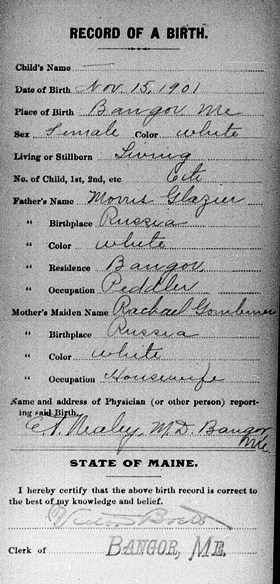
Sample image from “Maine Vital Records, 1670-1921.” Database with images. FamilySearch. http://FamilySearch.org : 2 May 2017. Citing Division of Vital Statistics. State Board of Health, Augusta. Click to view.
Connecticut. More than 755,000 indexed names have been added to FamilySearch.org’s free collection, Connecticut Marriages, 1640-1939. This hybrid index/image collection has this note: “We have legal rights to publish most of the images associated with these records; however, there are a few records that will not have an accompanying image available for view.”
Maine. FamilySearch.org has added nearly a half million indexed names to its collection of Maine Vital Records, 1670-1921. According to the site, the collection is comprised of a “name index and images of birth, marriage, and death returns acquired from the State Board of Health, Division of Vital Statistics and the state archives.”
Massachusetts: New images have been added to the New England Historic Genealogical Society’s collection for the Roman Catholic Archdiocese of Boston, 1789-1900. The update includes the following volumes: Immaculate Conception (Salem), St. Mary (Salem), and Sacred Heart (Roslindale).
Rhode Island. FamilySearch has added over a half million new indexed names and 30,000 digital images to its free collection, Rhode Island – Vital records. These are described as “Certificates and registers of births, 1846-1898, 1901-1903, marriages 1901-1903 and deaths, 1901-1953 acquired from the State Archives in Providence.”
Other new and updated records in the US include:
- Newspapers – Baltimore MD and Hartford CT. Newspapers.com has added issues for two major papers: the Baltimore Sun (1837-2017) and the Hartford Courant (1764–2017). (With a Newspapers.com Basic subscription, you can access issues of these papers through 1922; or, with a Publisher Extra subscription, access those early years and additional issues from 1923 onward.)
- Georgia. A memorial book for Georgia soldiers who served in World War I is being updated to include the names of African-Americans who served. “Due to the social and racial conditions of the time, this Memorial Book contains the information for only white soldiers,” explains the database landing page on the free United States World War I Centennial Commission website. “The current project is rectifying this by adding information for Georgia’s African-American personnel that also died in service. Further, we are adding names found on WWI monuments and plaques that are missing from the original Memorial Book….As missing names are determined and documented, they will be added” We learned about it in this press release from the University of North Georgia.
- Louisiana. A collection of digitized publications by the Louisiana United Methodist Women (and predecessor organizations) is now free to search at the Centenary College of Louisiana Archives & Special Collections web portal (scroll down to Digital Collections and click Louisiana United Methodist Women’s Publications). According to an announcement by the college, “The digitized material includes annual reports (1884-2014) and newsletters (1963-2006) – 12,000 pages in total. Researchers can access them online, page through each volume, download complete PDFs, and search the full text versions.” Published digitized material is easy to keyword-search for ancestors’ names and hometowns. Here’s a general tip for finding married women’s names in older documents: search on just her surname or her husband’s name, as she may appear as “Mrs. Alexander Reed.”
England: Newspapers and Parish Records
The British Newspaper Archive has added two new titles, The Yarmouth Independent (a Norfolk paper, 1862-1891) and The Rugby Advertiser (a Warwickshire title, 1850s-1950s).
Subscription website TheGenealogist has published over 100,000 parish records and thousands of voter records. According to the announcement, polls books include “35 different registers of people who were entitled to vote in Wakefield, West Yorkshire and other constituencies situated in Hampshire, Gloucestershire, Somerset and New Westminster in Canada….Electoral records are taken from the official lists produced to record who was entitled to vote in the various parliamentary elections.” Among new parish record collections are “100,000 new individuals added for the County of Worcestershire and additionally the Registers of the Parish Church of Rochdale in Lancashire that covers the period between 1642 and 1700.”
Findmypast.com has added 312,000 new records to its collection of Kent marriage records. New additions are for the parishes of Bapchild, Biddenden, Kilndown, Tenterden, and Wittersham. Additionally, over 18,000 new records have been added to Kent Baptisms (parishes of Bapchild, Brompton, Chatham, New Gillingham, Wingham and Wittersham); over 3,000 records have been added to Kent Banns (parishes of Bapchild, Biddenden, and Wittersham); and over 18,000 new records are in Kent Burials (parishes of Bapchild, Kilndown, Tenterden, and Wittersham).
The site has also added to its records for North West Kent, described as “areas within the London boroughs which were historically part of Kent.” Over 23,000 records have been added to the North West Kent Baptisms collection, and another 15,000 to North West Kent Burials.
Ireland – Easter Rising and Newspapers
Findmypast.com has added over 76,000 records to its collection, Easter Rising & Ireland Under Martial Law 1916-1921. According to the site, “These once classified records, digitized from original documents held by The National Archives in Kew, record the struggles of life under martial law in Ireland and contain the details of soldiers and civilians who participated in or were affected by the Easter Rising of April 1916.”
“Your ancestor may be found in the records if they were killed or wounded during the conflict, arrested and held in internment, or tried by court martial. Additionally, if their home or place of work was searched they may appear in the records as the collection shows the efforts of the military and police to discover arms, ammunition and seditious material through thousands of raids.”
Also, Findmypast.com has added over 401,089 new articles and one new title to its collection of historic Irish Newspapers. The Ballymena Weekly Telegraph is the latest publication to join the collection and currently covers the years 1904, 1906-1916, 1921-1929 and 1931-1957.
 Italy – Civil Registration
Italy – Civil Registration
FamilySearch.org has added to its free online collections of Italy’s civil registration records. Among them are:
- Trapani, 1906-1928; 1.1 million images added to an existing collection
- Brescia, 1797-1815, 1866-1943; 620,801 new browseable image
- Napoli, 1809-1865; 164,991 images added to an existing collection
- Benevento, 1810-1942, over a million images added to an existing collection
South Africa – Church records and civil death records
FamilySearch.org has added more than 61,000 digital record images and over 3,000 indexed names to its collection, South Africa, Dutch Reformed Church Records (Stellenbosch Archive), 1690-2011. Also updated at FamilySearch.org is South Africa, Cape Province, Civil Deaths, 1895-1972, with over 16,000 new names.
 Keep up with genealogy news from around the world with Lisa Louise Cooke’s FREE Genealogy Gems weekly e-newsletter. You’ll get a free Google Research e-book as a thank-you gift when you do. From this page (or any other on this website), just enter your name where it says “Sign up for the free email newsletter” and click GO.
Keep up with genealogy news from around the world with Lisa Louise Cooke’s FREE Genealogy Gems weekly e-newsletter. You’ll get a free Google Research e-book as a thank-you gift when you do. From this page (or any other on this website), just enter your name where it says “Sign up for the free email newsletter” and click GO.
Tour Your Childhood Home with Google and Google Earth
Ever thought of visiting your childhood home? Here’s a story about people who are actually buying theirs back. For the rest of us, here’s how to use Google and Google Earth to revisit your childhood home and relive some memories–without spending a dime.
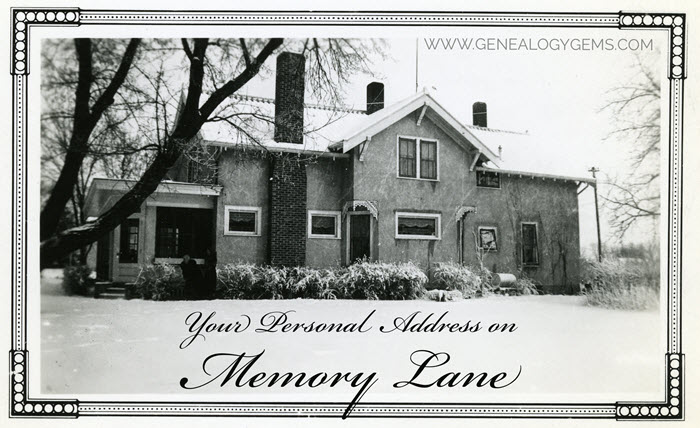
Your childhood home–or perhaps another beloved family home–is your own personal address on Memory Lane. Who wouldn’t love to stroll up to its doors and recapture some memories?
The image above is of my husband’s great grandfather’s home in Winthrop, Minnesota. It’s a home that I have many photos of, have researched, and have come to feel personally connected to although I’ve never seen it in person. It’s one of many ancestral homes that I yearn to visit one day. So as you can imagine, I really enjoyed this report from The Wall Street Journal about a few lucky folks who are living the dream of not only visiting, but owning and restoring, their childhood home.
Even if you’re not interested in buying back an old family home, many of us are curious about the houses we used to love. Are those houses still there? What do they look like now? What else can we learn about them?
Let’s explore three ideas to help you stroll down memory lane. Then, I’ll share a discovery from a Genealogy Gems Premium podcast listener who recently dropped me a line.
1. Find the address for your childhood home
If you don’t recall the street address of your favorite family home, ask a relative or look it up. For U.S. addresses since 1940, you might start with the U.S. Public Records Index, searchable in part or full at Ancestry.com (volumes 1 and 2 for 1950-1993), FamilySearch.org or MyHeritage.com (click here to learn more about that database). Look also in records such as:
- telephone and city directories (the example shown here is from Ancestry.com’s massive collection of U.S. city directories (1822-1995); the same site also has enormous collections of British phone books (1880-1984) and U.K. city and county directories (1766-1946); German address books (1829-1874) and German phone directories (1915-1981); Canadian phone and address directories (1995-2002) and Canadian city and area directories (1819-1906); Australia city directories (1845-1948), New Zealand city and area directories (1866-1954) and more)

Johnstown, PA city directory listing, 1889, digitized on Ancestry.com.
- draft registrations and other military paperwork
- Social Security application forms, known as SS-5 forms (click here to learn more about them)
- deeds
- old family letters
- newspaper articles (click here for tips on searching digitized newspaper content by address)
For U.S. addresses from 1880-1940, look to U.S. census records, which include street names and house numbers. In the example below from the 1930 census, you can see “Cedar Street” written vertically by the red arrow, and the house number written for each household entry, as shown in blue.
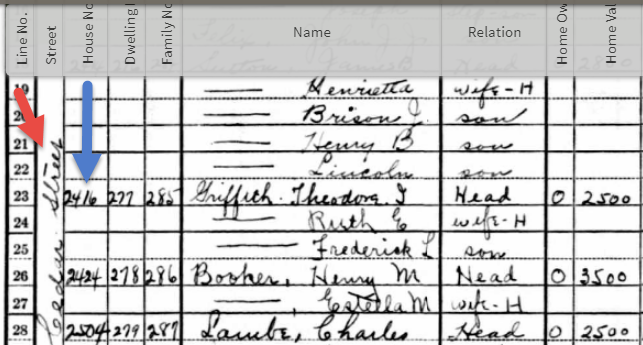
From the 1930 US census, Ancestry.com.
If you can’t find an address on an old record, but you think you could navigate yourself there on a map, it’s time to go to Google Earth and fly yourself there!
2. Use Google Earth to view your childhood home now
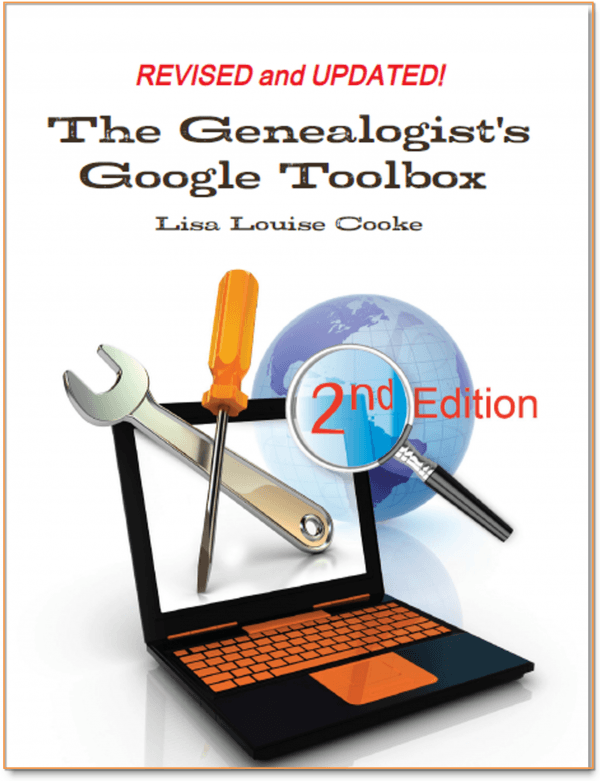
Learn all these Google skills with step-by-step tutorials and video demonstrations in The Genealogist’s Google Toolbox book
Google Earth is your on-ramp to your own personal Memory Lane. Go to the site, enter an address, and watch yourself “fly” to that address. If you don’t know an exact address but you know where to look, enter a street name or even a city. Then zoom in to the neighborhood and street section of interest. Activate Street View, if it’s available. Not sure how to do that? Watch my free Google Earth for Genealogy Video Class to get started.
Once you’ve found the location, take a close look. Is the house still there? What does it look like now? How has the landscape changed? The neighborhood?
You can use Google Earth to revisit your own childhood home or another family landmark, such as an ancestor’s homestead or burial place. (Click here to read about one genealogist’s virtual trip to an ancestor’s business using Google Earth’s Street View, and click here to see how another genealogist used historical map overlays in Google Earth to identify an old home’s location.)
3. Google the address of your childhood home
Googling the address of your family home may produce unexpected and interesting results like these:
a) Sale listings. If your house has been on the market in recent years, you may be able to find a listing with great details, and even pictures of the inside today. Top Google search results from specific addresses often bring up real estate websites with varying degrees of information, such as square footage, current estimated value, year built, most recent sale date and price, and more. Weed through these entries to see whether Zillow or another similar site shows a current or past listing for sale or rent. These may contain more details and may even have interior and exterior pictures of the house as it is now.
Watch closely—Google may bring up houses nearby, not the one you’re looking for. But even a neighborhood listing for a house built on a similar floor plan may jog your memories of the home and may give you a sense of what the area is like now.
b) Historical information. A Google search result may bring up historical news coverage or obituaries from digitized newspaper websites like Newspapers.com (a subscription may be required to view these in full). Or you may find something really fascinating, like a discovery made by Genealogy Gems Premium member Heather. After listening to me talk about this subject in Premium Podcast episode 141 (click here to subscribe), Heather wrote me this email:
“I love listening to the podcasts while driving to and from work, often sharing my own thoughts with you. This happened yesterday while listening to the latest Premium Podcast episode on family homes. I decided that I had to write and share what I managed to find! Since I have deep family roots in Connecticut back to 1650s, I managed to find a few family homes, but I started searching with the more recent generations and addresses that I knew. The two homes where my great-grandparents (Inez Hart and John Milton Burrall) and my great-grand aunts (Mary and Lucy Burrall) lived were written up in an application for the National Register of Historic Places!
The National Park Service is working on digitizing these applications. I found the application with a narrative description of the home and pictures of the interior and exterior. I have found other applications that have also included some genealogy of the family who lived in the home. Here is the website for the National Park Service and the database search page.”
Thanks for sending these in, Heather! And for sending along copies of the applications she found. The multi-page applications (more than 10 pages each!) include historical background on the buildings and former owners, as well as photos and site maps. Above is a photo–and below is an excerpt–from these applications.
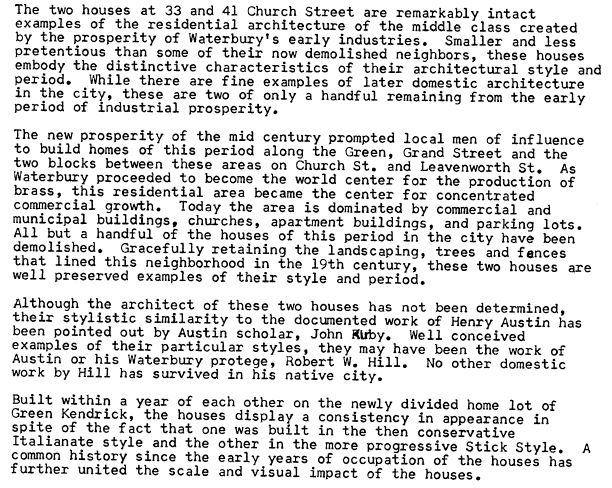
When you’re ready for a full-fledged Google education, take a look at my top-selling book, The Genealogist’s Google Toolbox, and my companion video tutorial series, Google Earth for Genealogy.

Get the downloadable video series at the Genealogy Gems Store
Disclosure: This post contains affiliate links and Genealogy Gems will be compensated if you make a purchase (at no additional cost to you) after clicking on these links. Thank you for supporting Genealogy Gems!


